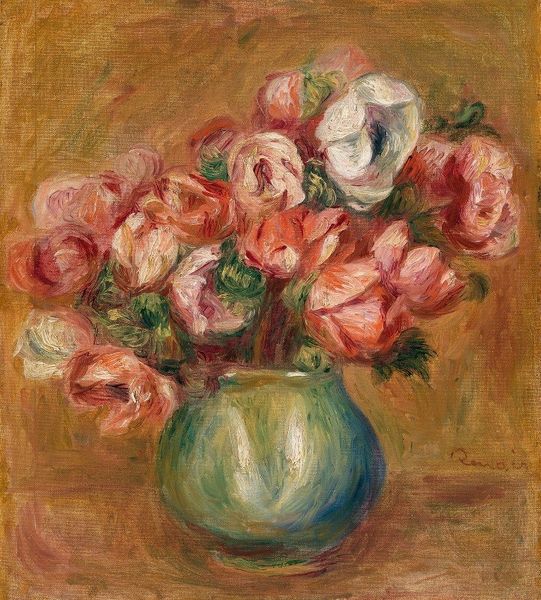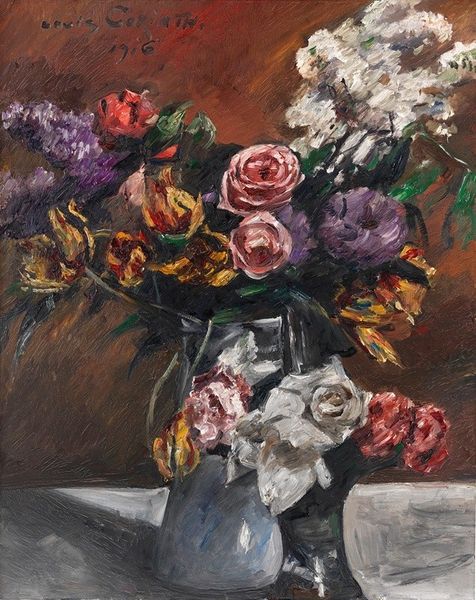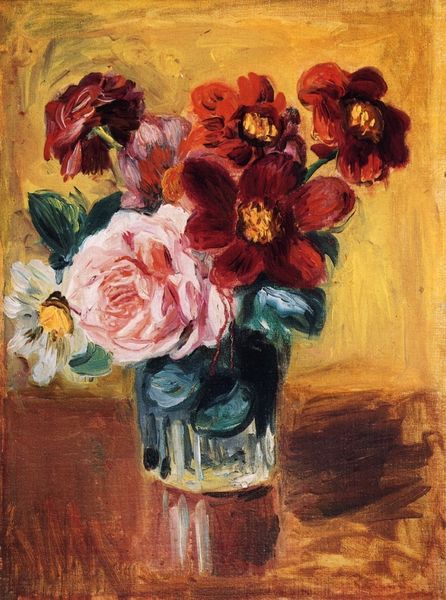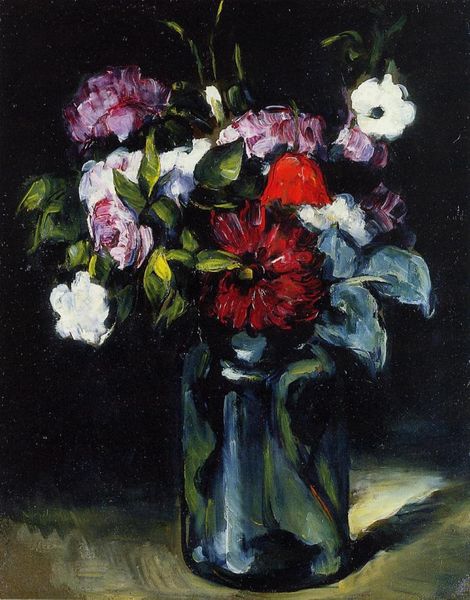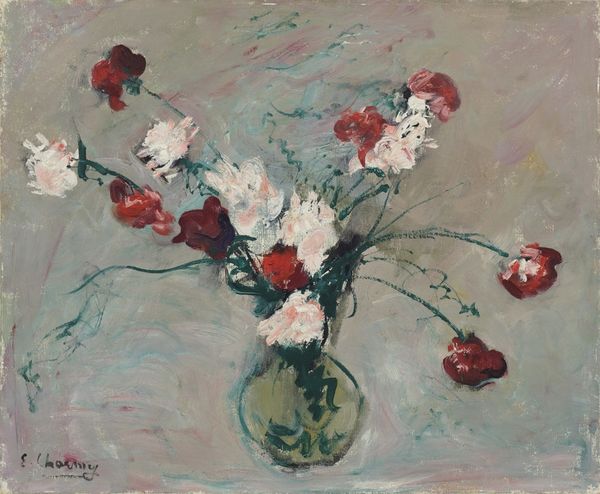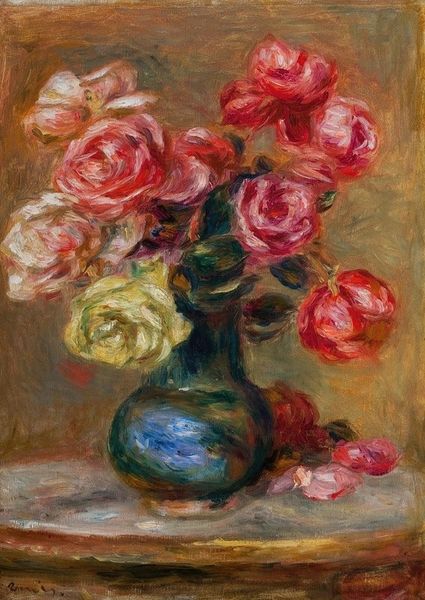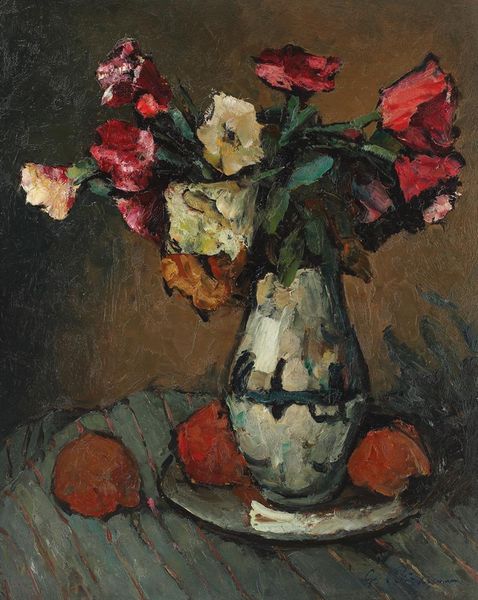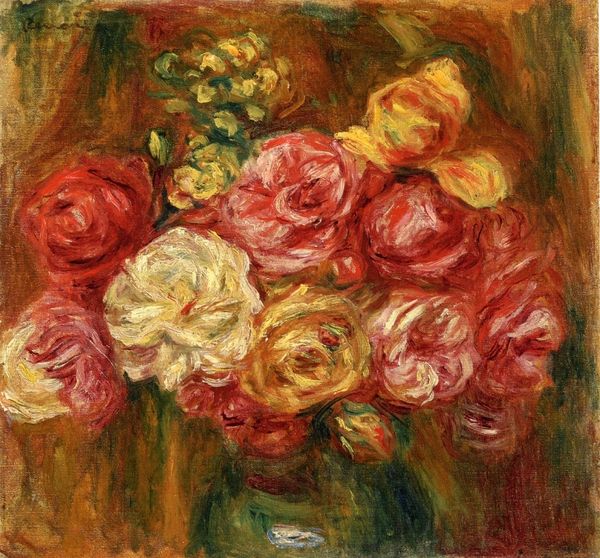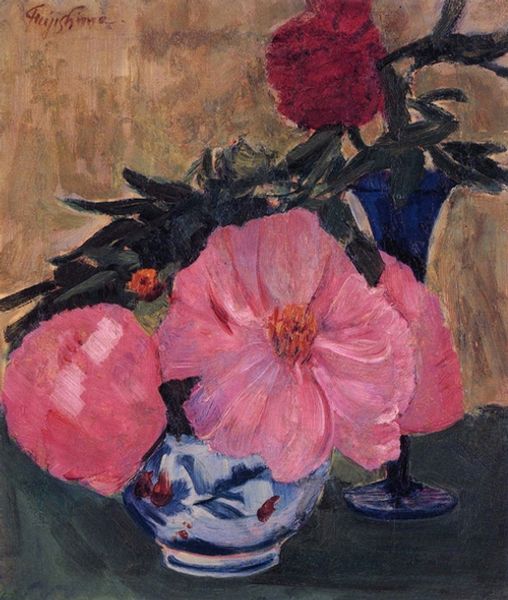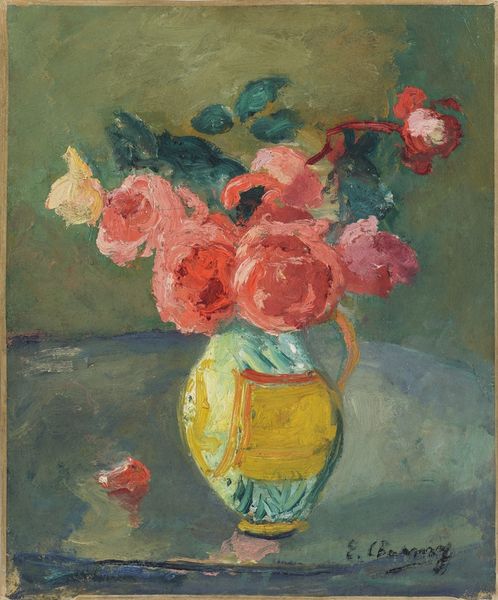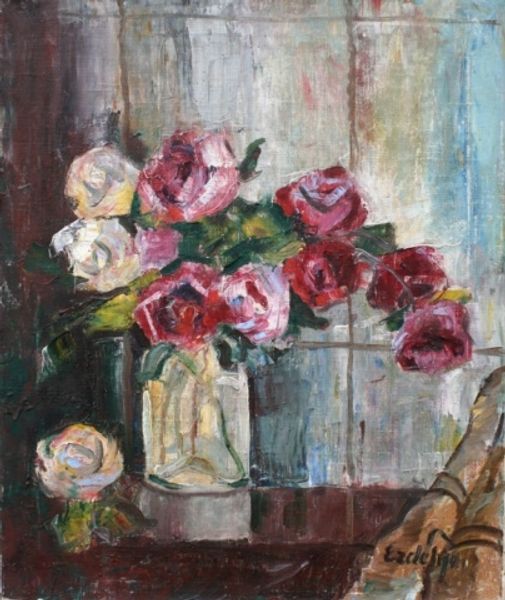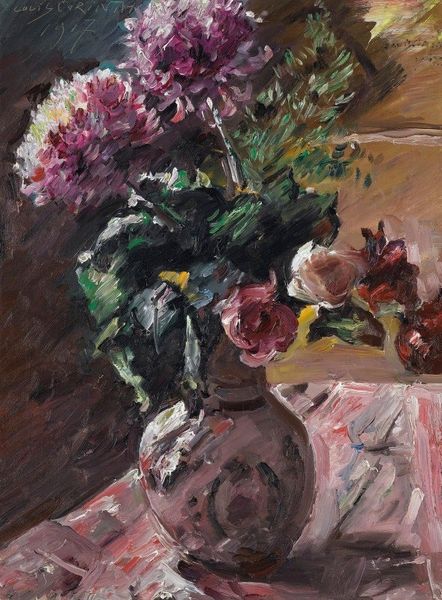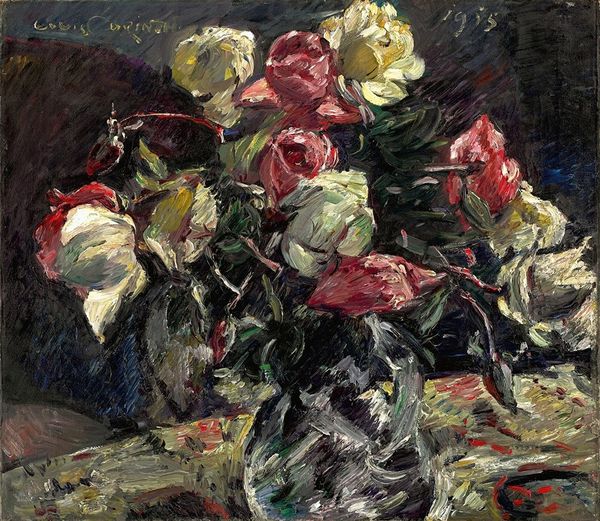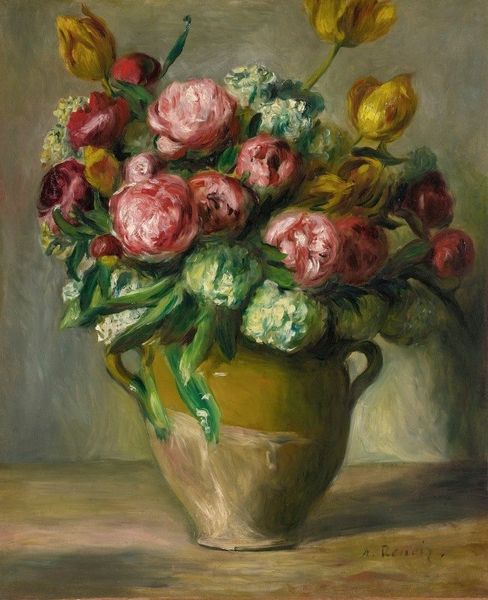
Copyright: Francisc Sirato,Fair Use
Curator: Immediately, the richness of the reds pulls you in, doesn’t it? Editor: Absolutely. There's a dramatic tension; it’s as if the roses are whispering a secret against the inky shadows. The impasto gives it so much life, I can almost smell them! Curator: Precisely! This oil painting, "Red and Pink Roses," was completed in 1940 by Francisc Sirato. Looking closely, you see an expressive application of paint, typical of the expressionist style Sirato explored throughout his career. Consider the socio-economic factors at play; such lush depictions during a period of global turmoil offered a crucial form of escapism for both artist and audience. Editor: That makes so much sense. To me, it's an eruption of defiant joy amidst all the darkness, a celebration of fleeting beauty, even as the world around it was crumbling. The materiality of the painting amplifies that urgency, doesn’t it? Curator: Without a doubt! He manipulates the oil paint not merely as a medium, but as a fundamental component of meaning. The thick texture mirrors the profusion and temporality of organic matter itself. Roses aren't just a pretty picture; they embody production, cultivation, the economy of beauty. Editor: And their decay is implicit. That heady bloom is on borrowed time; it's the poignancy that draws me back. It’s like remembering someone intensely. The vase almost seems too small, the flowers barely contained...a life force straining at its edges. Curator: Notice how Sirato used readily accessible and affordable materials to produce work that directly appealed to the bourgeoisie who, as a consumer demographic, wanted visually pleasing decorative works. The value resides less in inherent symbolic depth and more in its ability to capture, package, and sell a familiar motif within the established market structures. Editor: True, but I still feel that something deeper is at play here. A raw emotionality pushing through the formal arrangements of shape and color. It may have been commodified, yes, but its origins...those feel stubbornly authentic. Curator: An interesting interpretation. But it's key to remember that art making can't escape its own means of production. That reality in itself, can bring about compelling dynamics. Editor: I concede the point...Still, walking away, it’s those unruly strokes and the smoldering palette that stays with you, isn’t it? Like embers glowing long after the fire's gone out.
Comments
No comments
Be the first to comment and join the conversation on the ultimate creative platform.
